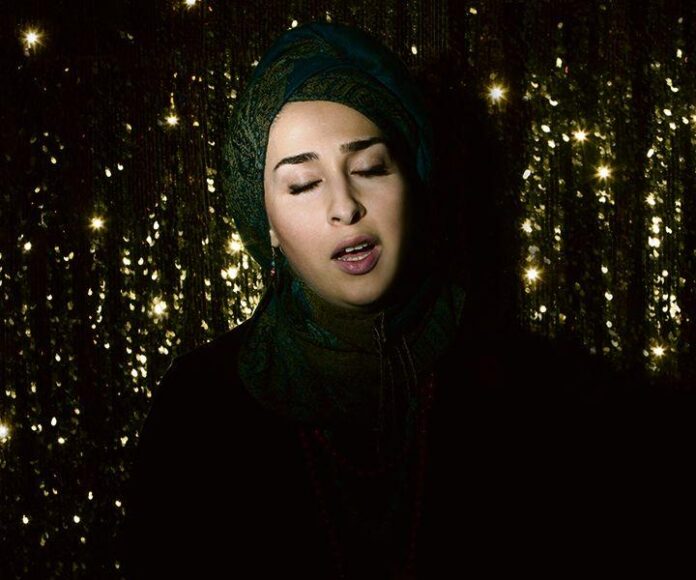Tehran-based Dastan Gallery is flying the flag for Iranian women artists at Frieze, with a timely selection of works by five established figures in the wake of the “Woman, Life, Freedom” protests across Iran and worldwide. The artists featured are Behjat Sadr (1924-2009) and Farideh Lashai (1944-2013), along with Farah Ossouli, Bita Fayyazi and Newsha Tavakolian; prices range from around $15,000 to $200,000.
Tavakolian’s six-screen video installation Listen (2010) highlights the restrictions on women singers in Iran. “For me a woman’s voice represents a power that if you silence it, imbalances society and makes everything deformed,” Tavakolian says. “I let Iranian women singers perform through my camera while the world has never heard them.”
Ossouli’s gouache on cardboard, David and I (2014), points to women as agents of change in patriarchal societies. The work looks to French painter Jacques-Louis David’s The Intervention of the Sabine Women (1799), which shows the women intervening to stop a battle between the Romans who had abducted and married the women, and the Sabine men determined to reclaim them.
This piece by David can be linked to the situation in Iran following the rise of the civil rights Green movement in 2009, Ossouli says. “We have been witnessing the efforts of women as mediators for bringing peace in pre- and post-revolution Iran,” she tells The Art Newspaper.
Turmoil was unleashed in Iran following the death of Mahsa Amini last September. Amini died in an Iranian hospital after being detained by the regime’s morality police for allegedly not complying with the country’s hijab regulations. Her death sparked ongoing mass protests in cities across Iran as well as demonstrations across the globe.
“There has been a will in these [five] artists to express themselves against limitations within a patriarchal society and a complex apparatus of power whose exercise of social control hinges on women’s bodies,” says Dastan in a statement. “Their practice is a seamless braiding of personal history and politics, lived through bone and blood, arriving at their unique language.”
Sadr is represented in the show by the painting Untitled (2009), where the “layer of oil is thin enough for the white under to shine through, yet heavy [enough] to make it crumble”, adds the gallery statement.
Fayyazi’s yarn and ceramics piece Heavenly Creatures (2022-23) shows an unmoored plant that appears to be growing organically, while Lashei’s Untitled from The Trees series (2008) completes the selection. The late Italian critic Germano Celant wrote in 2015 that Lashei is “a woman who has passed through and suffered troubled times in Iran, reflecting them in her works, from paintings to poetry”.
The independent curator and consultant Dina Nasser-Khadivi, who founded the collective behind the #PostItForwardWLF campaign, says: “Dastan has aligned its programme in a very smart way with the situation [in Iran] and its evolution. Throughout the years, they have been a great platform for key voices as well as for emerging artists in Iran. What they are showing in New York is very on point.”

























